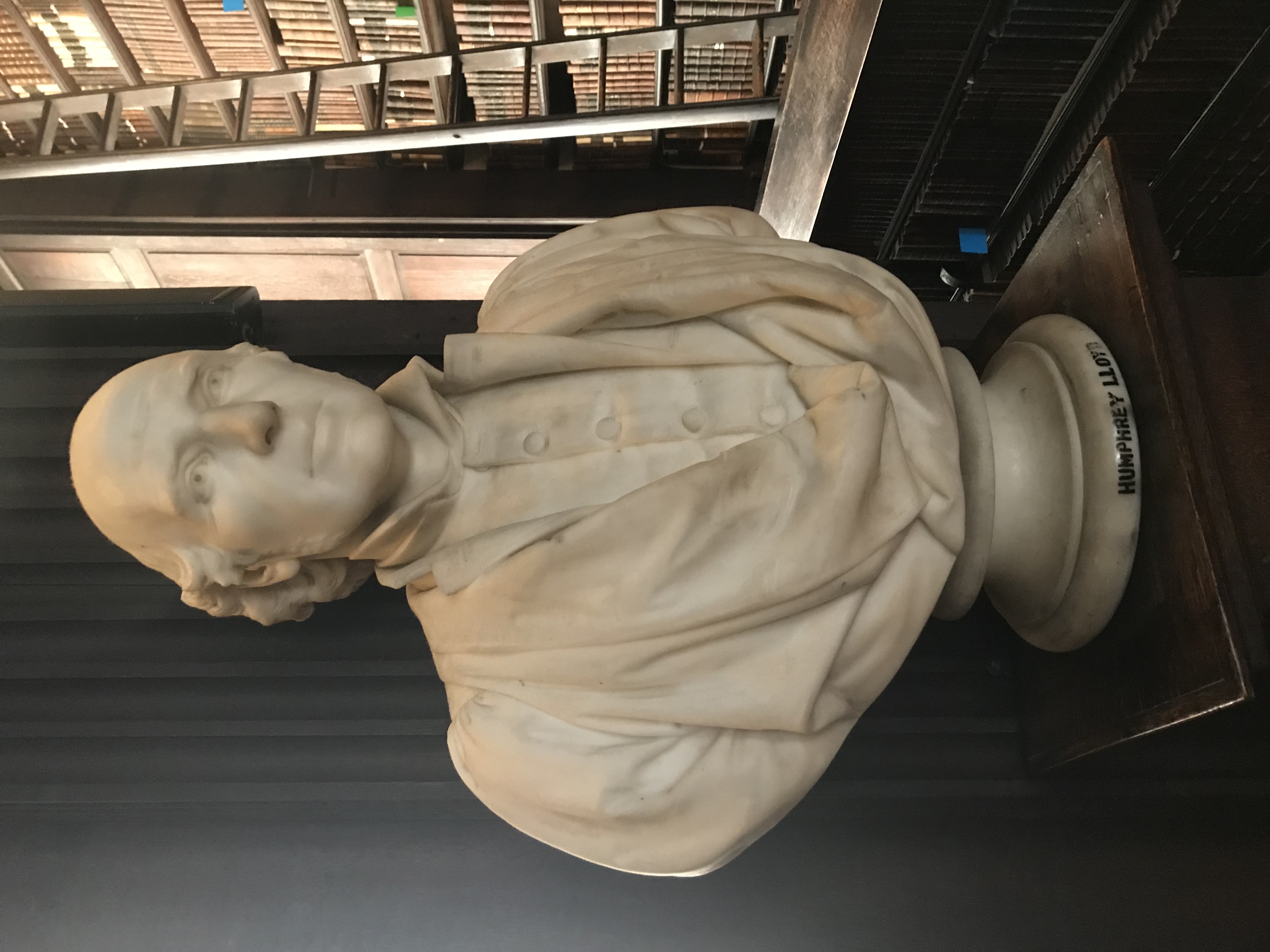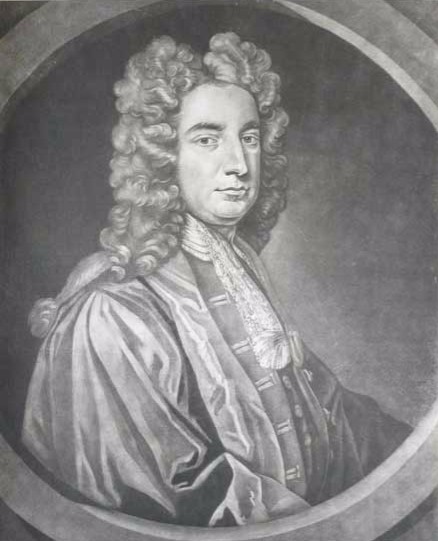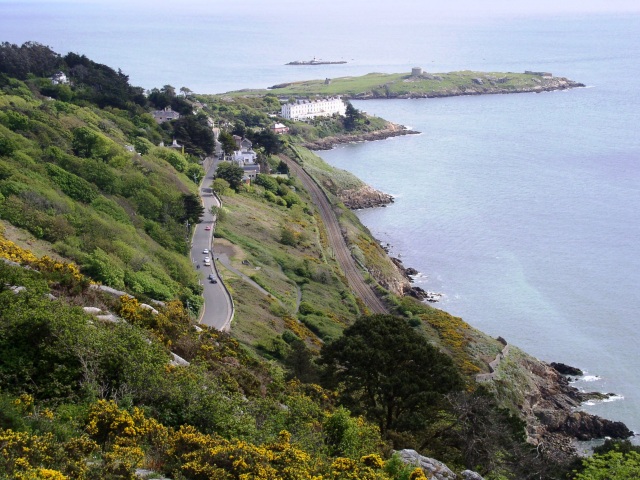|
Humphrey Lloyd (physicist)
Humphrey Lloyd Royal Society of London, FRS FRSE Royal Irish Academy, MRIA (1800–1881) was an Irish physicist. He was Erasmus Smith's Professor of Natural and Experimental Philosophy at Trinity College Dublin (1831-1843) and much later Provost (1867–1881). Lloyd is known for experimentally verifying conical refraction, a theoretical prediction made by William Rowan Hamilton about the way light is bent when travelling through a Optic axis of a crystal, biaxial crystal. He was a Fellow of the Royal Society, and President of both the British Association and the Royal Irish Academy. Early life The eldest son of the Rev. Bartholomew Lloyd, and his wife, Eleanor McLaughlin, he was born in Dublin on 16 April 1800. His father had also served as Erasmus Smith's Professor of Natural and Experimental Philosophy and Provost of TCD. After early education at Mr. White's school in Dublin, he entered Trinity College Dublin in 1815, first out of 63 competitors in the entrance examination. H ... [...More Info...] [...Related Items...] OR: [Wikipedia] [Google] [Baidu] |
Dublin
Dublin (; , or ) is the capital and largest city of Republic of Ireland, Ireland. On a bay at the mouth of the River Liffey, it is in the Provinces of Ireland, province of Leinster, bordered on the south by the Dublin Mountains, a part of the Wicklow Mountains range. At the 2016 census of Ireland, 2016 census it had a population of 1,173,179, while the preliminary results of the 2022 census of Ireland, 2022 census recorded that County Dublin as a whole had a population of 1,450,701, and that the population of the Greater Dublin Area was over 2 million, or roughly 40% of the Republic of Ireland's total population. A settlement was established in the area by the Gaels during or before the 7th century, followed by the Vikings. As the Kings of Dublin, Kingdom of Dublin grew, it became Ireland's principal settlement by the 12th century Anglo-Norman invasion of Ireland. The city expanded rapidly from the 17th century and was briefly the second largest in the British Empire and sixt ... [...More Info...] [...Related Items...] OR: [Wikipedia] [Google] [Baidu] |
Erasmus Smith's Professor Of Natural And Experimental Philosophy
Erasmus Smith's Professor of Natural and Experimental Philosophy at Trinity College Dublin is a chair in physics founded in 1724 and funded by the Erasmus Smith Trust, which was established by Erasmus Smith, a wealthy London merchant, who lived from 1611–1691. It is one of the oldest dedicated chairs of physics in Britain and Ireland. Originally, the holder was to be elected from the members of the college by an examination to determine the person best qualified for the professorship. Since 1851, the professorship has been supported by Trinity College. Of the 22 holders of this chair, seven were Fellows of the Royal Society while one, Ernest Walton, won the Nobel Prize for Physics. The inaugural Erasmus Smith's Professor of Natural and Experimental Philosophy was Richard Helsham (1724), who was also the Donegal Lecturer in Mathematics (1723-30) as well as the Regius Professor of Physic (1733-38) at Trinity College. He is best known for his book, ''A Course of Lectures in N ... [...More Info...] [...Related Items...] OR: [Wikipedia] [Google] [Baidu] |
1800 Births
Eighteen or 18 may refer to: * 18 (number), the natural number following 17 and preceding 19 * one of the years 18 BC, AD 18, 1918, 2018 Film, television and entertainment * 18 (film), ''18'' (film), a 1993 Taiwanese experimental film based on the short story ''God's Dice'' * Eighteen (film), ''Eighteen'' (film), a 2005 Canadian dramatic feature film * 18 (British Board of Film Classification), a film rating in the United Kingdom, also used in Ireland by the Irish Film Classification Office * 18 (Dragon Ball), 18 (''Dragon Ball''), a character in the ''Dragon Ball'' franchise * "Eighteen", a 2006 episode of the animated television series ''12 oz. Mouse'' Music Albums * 18 (Moby album), ''18'' (Moby album), 2002 * 18 (Nana Kitade album), ''18'' (Nana Kitade album), 2005 * ''18...'', 2009 debut album by G.E.M. Songs * 18 (5 Seconds of Summer song), "18" (5 Seconds of Summer song), from their 2014 eponymous debut album * 18 (One Direction song), "18" (One Direction song), from the ... [...More Info...] [...Related Items...] OR: [Wikipedia] [Google] [Baidu] |
John Hewitt Jellett
John Hewitt Jellett (25 December 1817 – 19 February 1888) was an Irish people, Irish mathematician whose career was spent at Trinity College Dublin (TCD), where he rose to the rank of List of Provosts of Trinity College Dublin, Provost. He was also a priest in the Church of Ireland. Life He was the son of Rev. Morgan Jellett (c. 1787–1832), later rector of Tullycorbet, County Monaghan, and his wife Harriette Townsend, daughter of Hewitt Baldwin Poole, Esq. (died 1800), of Mayfield, Cork, County Cork, by his wife Dorothea Morris. He was born at Cashel, County Tipperary, and educated at Kilkenny College and at TCD, where he became a fellow in 1840.Jellett, John Hewitt Ask about Ireland He was the eldest brother of Hewitt Poole Jellett, Serjeant-at-law (Irela ... [...More Info...] [...Related Items...] OR: [Wikipedia] [Google] [Baidu] |
List Of Provosts Of Trinity College Dublin
The following persons have been provost of Trinity College Dublin. References {{University of Dublin, Trinity College Trinity College, Dublin , name_Latin = Collegium Sanctae et Individuae Trinitatis Reginae Elizabethae juxta Dublin , motto = ''Perpetuis futuris temporibus duraturam'' (Latin) , motto_lang = la , motto_English = It will last i ... Trinity College, Dublin, Provosts ... [...More Info...] [...Related Items...] OR: [Wikipedia] [Google] [Baidu] |
Albert Bruce Joy
Albert Bruce-Joy (21 August 1842 – 22 July 1924) was an Irish sculptor working in England. His original surname was Joy but he became known under his hyphenated name Bruce-Joy later in life. He was the brother of the painter George W. Joy. Biography Son of William Bruce Joy, MD, Bruce-Joy was born in Dublin but educated in Offenbach, Paris and at King's College London. He trained as a sculptor with John Henry Foley at the National Art Training School, South Kensington, and the Royal Academy Schools. He began exhibiting at the Royal Academy from 1866 onwards. In 1867 he gave an address in RomeAlbert Bruce Joy ARHA, RHA Mapping the Practice and Profession of Sculpture in Britain and Ireland 1851-1951, University of Glasgow History of Art and HATII, online database 2011, accessed 04 Dec 2012. where he ... [...More Info...] [...Related Items...] OR: [Wikipedia] [Google] [Baidu] |
Pour Le Mérite
The ' (; , ) is an order of merit (german: Verdienstorden) established in 1740 by Frederick the Great, King Frederick II of Prussia. The was awarded as both a military and civil honour and ranked, along with the Order of the Black Eagle, the Order of the Red Eagle and the House Order of Hohenzollern, among the highest orders of merit in the Kingdom of Prussia. The order of merit was the highest royal Prussian order of bravery for officers of all ranks. After 1871, when the various German monarchy, kingdoms, grand duchy, grand duchies, duchy, duchies, principality, principalities and Hanseatic League, Hanseatic city states had come together under Prussian leadership to form the federally structured German Empire, the Prussian honours gradually assumed, at least in public perception, the status of orders, decorations, and medals of Imperial Germany, honours of Imperial Germany, even though many honours of the various German states continued to be awarded. The ' was an honour confe ... [...More Info...] [...Related Items...] OR: [Wikipedia] [Google] [Baidu] |
American Philosophical Society
The American Philosophical Society (APS), founded in 1743 in Philadelphia, is a scholarly organization that promotes knowledge in the sciences and humanities through research, professional meetings, publications, library resources, and community outreach. Considered the first learned society in the United States, it has about 1,000 elected members, and by April 2020 had had only 5,710 members since its creation. Through research grants, published journals, the American Philosophical Society Museum, an extensive library, and regular meetings, the society supports a variety of disciplines in the humanities and the sciences. Philosophical Hall, now a museum, is just east of Independence Hall in Independence National Historical Park; it was designated a National Historic Landmark in 1965. History The Philosophical Society, as it was originally called, was founded in 1743 by Benjamin Franklin, James Alexander (lawyer), James Alexander, Francis Hopkinson, John Bartram, Philip Syn ... [...More Info...] [...Related Items...] OR: [Wikipedia] [Google] [Baidu] |
H Lloyd Bust
H, or h, is the eighth letter in the Latin alphabet, used in the modern English alphabet, the alphabets of other western European languages and others worldwide. Its name in English is ''aitch'' (pronounced , plural ''aitches''), or regionally ''haitch'' ."H" ''Oxford English Dictionary,'' 2nd edition (1989); ''Merriam-Webster's Third New International Dictionary of the English Language, Unabridged'' (1993); "aitch" or "haitch", op. cit. History The original Semitic letter Heth most likely represented the voiceless pharyngeal fricative (). The form of the letter probably stood for a fence or posts. The Greek Eta 'Η' in archaic Greek alphabets, before coming to represent a long vowel, , still represented a similar sound, the voiceless glottal fricative . In this context, the letter eta is also known as Heta to underline this fact. Thus, in the Old Italic alphabets, the letter Heta of the Euboean alphabet was adopted with its original sound value . While Etruscan and La ... [...More Info...] [...Related Items...] OR: [Wikipedia] [Google] [Baidu] |
Irish Disestablishment
The Irish Church Act 1869 (32 & 33 Vict. c. 42) was an Act of the Parliament of the United Kingdom which separated the Church of Ireland from the Church of England and disestablished the former, a body that commanded the adherence of a small minority of the population of Ireland. The Act was passed during the first ministry of William Ewart Gladstone and came into force on 1 January 1871. It was strongly opposed by Conservatives in both houses of Parliament. The Act meant the Church of Ireland was no longer entitled to collect tithes from the people of Ireland. It also ceased to send representative bishops as Lords Spiritual to the House of Lords in Westminster. Existing clergy of the church received a life annuity in lieu of the revenues to which they were no longer entitled: tithes, rentcharge, ministers' money, stipends and augmentations, and certain marriage and burial fees. The passage of the Bill through Parliament caused acrimony between the House of Commons and the ... [...More Info...] [...Related Items...] OR: [Wikipedia] [Google] [Baidu] |
Richard MacDonnell (scholar)
Richard MacDonnell LL.D., D.D., S.F.T.C.D. (1787–1867) was an Irish cleric and academic, who became the Reformist and 29th Provost of Trinity College Dublin. He was also the projector of Sorrento Terrace, Dalkey, today known as the largest row of houses in Ireland. Background MacDonnell, of the Tynekill MacDonnells of Leinster, was the son of Robert MacDonnell (1764–1821) of High Park, near Douglas, County Cork, and Susanna Nugent (1766–1836) of Ardmore, County Waterford, of the Cloncoskraine Nugents in the same county. For much of his life, his father had been prosperous, with a revenue appointment at Cork found for him by George Lowther, a family friend. Instead of retirement, he found property prices fell after 1815 and died disappointed. Trinity College Dublin Educated at Trinity College Dublin (1800–1805), MacDonnell was elected a scholar in 1803. In 1808 he was elected a lay Fellow at Trinity which allowed him to practise at the Irish Bar. He was awarded his LL.D. ... [...More Info...] [...Related Items...] OR: [Wikipedia] [Google] [Baidu] |
Terrestrial Magnetism
Earth's magnetic field, also known as the geomagnetic field, is the magnetic field that extends from Earth's interior out into space, where it interacts with the solar wind, a stream of charged particles emanating from the Sun. The magnetic field is generated by electric currents due to the motion of convection currents of a mixture of molten iron and nickel in Earth's outer core: these convection currents are caused by heat escaping from the core, a natural process called a geodynamo. The magnitude of Earth's magnetic field at its surface ranges from . As an approximation, it is represented by a field of a magnetic dipole currently tilted at an angle of about 11° with respect to Earth's rotational axis, as if there were an enormous bar magnet placed at that angle through the center of Earth. The North geomagnetic pole actually represents the South pole of Earth's magnetic field, and conversely the South geomagnetic pole corresponds to the north pole of Earth's magnetic field ... [...More Info...] [...Related Items...] OR: [Wikipedia] [Google] [Baidu] |






